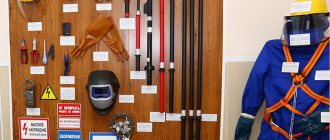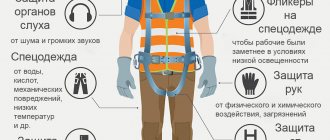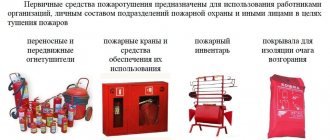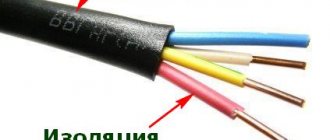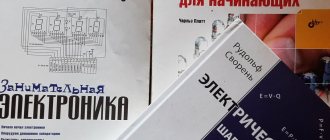What is PPE: decoding and definition. PPE stands for “personal protective equipment.” These are means used by the employee to prevent or reduce exposure to harmful and dangerous production factors, as well as to protect against pollution. They are used in cases where work safety cannot be ensured in any other way (for example, by the design of equipment, organization of production processes, architectural and planning solutions and collective protective equipment). PPE may include special clothing, special footwear, isolation suits, respiratory protection, hand protection, head protection, face protection, hearing protection, eye protection, and various safety devices.
What applies to PPE
In order to avoid controversial issues, labor legislation (more specifically, Article 209) clearly states what applies to personal protective equipment. For example, this category includes gas masks, protective gloves, goggles, belts, and other specialized clothing and shoes. The main criterion is the protective function.
Different human organs can be protected. PPE is classified on this basis. Thus, there are protective products for the eyes, skin, entire head, and respiratory organs. Separately, there are devices against falling from a height (insurance).
There are also filtering and isolating personal protective equipment. The former filter air masses entering the lungs and skin, the latter protect from the effects of electric current, chemicals, high or low temperature, etc.
Do not forget that PPE can also include flushing, neutralizing agents and other liquids. There are complex types of protection: overalls of various configurations and purposes. A complete list of protective equipment at work can be found in GOST 12.4.011-89.
Types of personal protective equipment (PPE)
According to the “Occupational Safety Standards System (OSSS). Protective equipment for workers. General requirements and classification” personal protective equipment, depending on the purpose, is divided into 12 classes:
- insulating suits (pneumatic suits, waterproofing suits, spacesuits);
- respiratory protection equipment (gas masks, respirators, self-rescuers, pneumatic helmets, pneumatic masks, pneumatic jackets);
- special protective clothing (sheep coats, coats, short coats, short fur coats, capes, raincoats, half-coats, dressing gowns, suits, jackets, shirts, trousers, shorts, overalls, bib overalls, vests, dresses, sundresses, blouses, skirts, aprons, shoulder pads);
- foot protection (boots, boots with an extended top, boots with a short top, ankle boots, boots, low shoes, shoes, shoe covers, galoshes, boots, slippers (sandals), high boots, boots, shin guards, over the knee boots, knee pads, foot wraps);
- hand protection (mittens, gloves, semi-gloves, finger pads, palm pads, wrist pads, sleeve pads, elbow pads);
- head protection (hard hats, helmets, balaclavas, caps, berets, hats, caps, headscarves, mosquito nets);
- face protection equipment (face shields);
- eye protection (goggles);
- hearing protection equipment (anti-noise helmets, anti-noise earplugs, anti-noise headphones);
- fall protection equipment and other safety equipment (safety belts, cables, hand grips, manipulators, knee pads, elbow pads, shoulder pads);
- dermatological protective products (protective creams, skin cleansers, reparative agents);
- complex protective equipment.
Personal protective equipment is also classified depending on the influencing factors:
- protection from mechanical damage;
- protection from industrial pollution;
- protection against watery solutions;
- protection against non-toxic dust;
- protection against toxins and other chemical compounds;
- protection from biological factors (viruses, microbes);
- radiation protection;
- protection from electrical influence;
- protection when working in low visibility areas.
Classification
Personal protective equipment against electric shock
The modern classification of PPE includes 6 types of means intended for protection:
- Eye organs – safety glasses, welder’s mask, face shields;
- Respiratory tract – gas masks, anti-aerosol respirators (filtering half masks);
- Hearing organs – earplugs, earplugs, protective headphones;
- Heads - helmets made of durable plastic, balaclavas, caps;
- Hands – gloves, mittens, canvas leggings, oversleeves;
- Legs - durable and reliable models of winter boots, light and airtight shoe covers, winter and autumn ankle boots, shoes, slippers;
- Skin – various types of workwear (robes, overalls, jackets, overalls, trousers, aprons).
For your information. Personal protective equipment also includes mounting belts, which are used to ensure the safety of a person when performing various works at height.
Requirements for personal protective equipment
Here are the basic requirements for PPE according to GOST 12.4.011-89:
- Protective equipment for workers must ensure the prevention or reduction of hazardous and harmful production factors. The PPE itself should not be a source of hazardous and harmful production factors.
- Protective equipment must meet the requirements of technical aesthetics and ergonomics.
- The choice of a specific type of protective equipment for workers should be made taking into account the safety requirements for a given process or type of work.
- PPE should not change its properties during washing, dry cleaning and disinfection.
- Personal protective equipment must be assessed for protective, physiological, hygienic and performance indicators.
- Requirements for labeling personal protective equipment must comply with GOST 12.4.115 and labeling standards for specific types of personal protective equipment.
- Personal protective equipment must have instructions indicating the purpose and service life of the product, the rules for its operation and storage.
Basic requirements for workwear
Sewing any model of workwear begins with the selection of fabrics, determining the model, taking into account all the specifics of the work, as well as adapting the work suit to the general style of the enterprise or company. Additional processing includes applying the company's symbols or brand to a work suit , work shoes or protective equipment.
The following requirements apply to high-quality workwear:
- The quality, durability and strength of the materials from which the work suit or shoes . Any workwear should be reliable to wear: ideally, a suit should last 2-3 years and maintain a fairly decent appearance. For clothing that is used in a complex manufacturing process, tear-resistant seam threads should be used, preferably heat-resistant or reinforced threads.
- Climate compliance. The entire set of work clothing must comply with climate conditions and the season ( winter workwear , summer workwear , demi-season workwear ).
- Full compliance with the professional field and specifics of the work. Workwear should be ergonomic and comfortable to wear . For each professional application, the cut of the suit, decoration and number of pockets, fastener options, etc. are taken into account.
- Repairability and reliability. The work suit must recover well and be resistant to shrinkage or abrasion.
- Quite a high degree of hygiene. A work suit must be breathable and hygroscopic. Comfort during work and the health of the employee depend on this.
- Aesthetic appearance of workwear. Modern workers have a keen sense of the style and beauty of a work suit. Therefore, both work shoes and a suit should complement each other, harmonize in color, and be visually attractive. In this case, we are talking not only about the office version of business clothing, but also about overalls for machine operators or welders, as well as specialists in repair and construction work.
Modern materials are able to meet the requirements of workwear!
How to issue
The Labor Code does not regulate exactly how and within what time frames it is necessary to issue personal protective equipment. The head of the organization or the employee responsible for this has the right to independently decide the form and frequency of issuance. If workers are provided with protective equipment constantly and of adequate quality, then the inspection organizations will not have any complaints.
As for the legislative framework, the process of issuing PPE is regulated by Order of the Ministry of Health and Social Development No. 290n dated June 1, 2009. It says that when issuing, one must be guided by the specific specifics of production processes.
Order of the Ministry of Labor No. 997n dated December 9, 2014 spells out in detail which personal protective equipment lasts for how long. For example, the maximum service life of a helmet together with a balaclava, as well as a protective raincoat, is 2 years.
PPE quality control
Basic protection against electric shock
Control of personal protective equipment involves their acceptance upon arrival at the warehouse by a special commission of representatives of the administration and trade unions. At the same time, not only the marking of personal protective equipment is checked, the compliance of their quantity with the submitted application, but also the presence of special certificates for the protective equipment, their compliance with the requirements of regulatory documents (GOST, TU). Such acceptance is carried out in a specially equipped room no later than within 10 days after the PPE arrives at the warehouse. All products that have passed acceptance are marked with a seal of suitability. Successful acceptance is documented by an appropriate act signed by all members of the commission and approved by the head of the enterprise.
Note! If defects or discrepancies are detected in the delivered batch of PPE, a defect (non-conformity) report is issued and all PPE is returned to the supplier.
To be filled in by
The company has the right to independently decide which of its employees will be responsible for issuing PPE and filling out the log. It is fundamentally important that this is a competent employee. This obligation may be specified in the employment contract.
Another way to instruct an employee to fill out a journal for the issuance of personal protective equipment is to appoint him responsible for performing this duty by a special order from the manager. In practice, very often such responsible employees are department heads and foremen.
Elements of the PPE issuance log
The document is quite simple. Its form consists of two sheets: the cover and the main tabular part. The cover should have:
- Document's name. It is printed in the center of the sheet. Without a number.
- The name of the organization in which it is conducted. If necessary, a structural unit (if there are several journals).
- What date did the magazine start and finish? The second date is usually entered after the fact. Filling out the internal part of the document is possible (and is done) without an end date.
The second sheet of the journal for recording the issuance of personal protective equipment is a sample for filling out subsequent ones. It contains the following fields to fill out:
- Serial number. The document uses continuous numbering.
- Name of protective equipment (gloves, helmet, goggles, suit, etc.).
- Date of issue.
- Service life of a specific product. It can be viewed in the attached documents upon purchase.
- Full name of the recipient of the PPE.
- Signature of the employee who received the item.
- Name and signature of the person who issued the issuance.
- Note. This column most often indicates the basis for issuance. This may be an order from the head of the institution or some provision on extradition. The numbers and dates of these documents are entered in the last column of the journal.
Rules for filling out the journal for recording the issuance of personal protective equipment
After the pages are printed, they are bound. If the magazine has expired (the specified validity period has passed, usually 1 year), then the total number of pages is written on the last sheet, signed by the head of the organization, and stamped.
Important! Each page of the magazine must be numbered.
Control over the safety of personal protective equipment and their thorough inspection are carried out before their issuance, and subsequently - once every six months. This also needs to be noted in the journal. If possible, then in the “note” column.
Corrections and blots in the document are not welcome, but can be corrected. To do this, false information is crossed out with one line, and the correct information is written on top or on the side (where there is free space). In this case, the signature of the responsible person and the text “Believe the corrected one” are required.
Liability for failure to provide
The employer bears administrative responsibility for inadequate provision of PPE for employees under Part 1 of Art. 5.27.1 of the Code of Administrative Offenses of the Russian Federation, in the event of a repeated commission of a similar violation - in accordance with Part 5 of Art. 5.27.1 Code of Administrative Offenses of the Russian Federation.
If the employer did not provide workers with first class PPE (of simple design), did not repair it, did not replace it in a timely manner, liability will arise under Part 1 of Art. 5.27.1 Code of Administrative Offenses of the Russian Federation in the form of:
- Warnings
- Fine:
- for officials - from 2000 to 5000 rubles;
- for individual entrepreneurs - from 2000 to 5000 rubles;
- for a legal entity - from 50,000 to 80,000 rubles.
If the employer does not provide workers with PPE of the second class (complex design), liability will arise under Part 4 of Art. 5.27.1 of the Code of Administrative Offenses of the Russian Federation in the form of a fine:
- for an official - from 20,000 to 30,000 rubles;
- Individual entrepreneur - from 20,000 to 30,000 rubles;
- for a legal entity - from 100,000 to 150,000 rubles.
A repeated similar violation will entail liability in accordance with Part 5 of Art. 5.27.1 Code of Administrative Offenses of the Russian Federation in the form of:
- for an official - a fine of 30,000 to 40,000 rubles or disqualification for a period of one to three years;
- Individual entrepreneur - a fine of 30,000 to 40,000 rubles or administrative suspension of activities for up to 90 days;
- for a legal entity - from 10,000 to 200,000 rubles or administrative suspension of activities for up to 90 days.
Thus, the employer’s area of responsibility is the timely and full provision of certified PPE to employees, control over the correct use of them, as well as for their storage and care.
Procedure for using protective clothing for healthcare workers
Now the main functions for the current resolution of the coronavirus situation are assigned to Rospotrebnadzor and the Ministry of Health. Agencies regularly publish explanatory and informational documents regulating the behavior of different groups of the population during a pandemic. They describe how to properly wear a protective suit for coronavirus for medical workers. The fact is that in a difficult epidemiological situation, it is extremely important to use such protective equipment correctly, since violating the order of their use can significantly reduce the expected effect.
The documentation from Rospotrebnadzor indicates that the causative agent of the coronavirus SARSCoV-2 belongs to group II of pathogenicity. This necessitates the use of the following types of protective equipment for various situations that arise during medical activities:
- evacuation of coronavirus patients, performing medical procedures in an infectious diseases hospital, performing regular and final disinfection - type II protective suit, which includes a special overalls or pajamas, an anti-plague robe with a hood or complemented by a large scarf, a cotton-gauze mask, rubber boots and gloves, socks and a towel. Rubber boots can be replaced with tarpaulin boots;
- work in an isolation ward, which involves the possibility of contact with persons who may be infected with coronavirus, performing medical observation of people directly in areas of infection. For this, type IV protective clothing is used, which includes pajamas, medical gown, gauze scarf or cap, socks and shoes or slippers;
- performing autopsies on dead bodies and preparing for subsequent burial – type I protective clothing, the set of which includes a complete list of protective equipment that ensures maximum safety for health workers. In this case, it is especially important to follow the procedure for putting on and taking off a suit during coronavirus for health workers. It includes: overalls or pajamas with a hood (or, in its absence, a large scarf), anti-plague robe, cotton-gauze bandage or dust respirator, goggles, socks, towel, rubber gloves and boots (tarpaulin boots are also allowed).
What to use for coronavirus clothing
Viruses can settle on things, COVID-19 is no exception. Getting into splashes of saliva when the patient coughs, sneezes, or talks, they remain on clothing.
Regular items cover the skin, but cannot completely prevent infection. For these purposes, special protective clothing against coronavirus is used. It is worn by people whose activities involve a risk of contracting COVID-19 during an epidemic (medical workers, scientists, etc.).
According to research, the pathogen lingers on leather, vinyl, polyester, leatherette for up to 2 days, and on cotton and other natural fabrics for about a day. Parts made of plastic and metal extend the lifespan up to a week.
In order to prevent coronavirus infection, it is preferable to adhere to the following principles when choosing clothes:
- things cover the skin and hair as much as possible;
- made from natural fabrics;
- contain a minimum of plastic parts, metal locks, fasteners;
- subject to washing in hot water, intensive rinsing, exposure to chlorine, ironing.
How often should you wash clothes during the coronavirus epidemic?
- as usual, i.e. as pollution occurs - subject to the self-isolation regime;
- after visiting a pharmacy, supermarket, medical facility;
- if there was a meeting with a person infected with COVID-19 or suspected of it;
- daily when working with people, using the metro, public transport.
The water temperature must be at least 60 °C, the washing duration must be at least an hour. After the end of the cycle, you need to apply an additional rinse.
It is advisable to use detergents containing chlorine. You can add a mixture of 9% vinegar and water (1 to 1 ratio) to the rinsing compartment.
Streetwear processing options:
- A solution of 70% alcohol or 9% vinegar. Dampen a piece of cotton cloth and wipe it when returning home.
- Spray things with a spray bottle with the same liquids.
To watch the story from Rospotrebnadzor:
For medical staff
For doctors, anti-plague or disposable anti-epidemic suits are used as protective clothing against coronavirus when working. They completely cover the skin, eyes and hair, which prevents infection.
Ambulance clothing
The same suits are used for ambulance workers as for doctors in outpatient clinics and hospitals. The driver can be dressed like this:
- in protective overalls if his cabin is completely isolated;
- in a complete set when the cabin is not closed from the passenger compartment.
The driver, who is an orderly or paramedic, must wear a protective kit.
How to wear protective clothing correctly:
- Wash the hands;
- wear pajamas, a robe or overalls;
- put on shoes;
- Wash the hands;
- put on a cap, apron, mask, protective screen, gloves.
For ordinary people
When leaving home, you should give preference to thick fabrics. These are tweed, wool, gabardine. Smooth items are easier to disinfect. These include leather, satin, silk.
The uniform should include a cap, Panama hat, scarf or hat, and glasses. To protect the skin of your hands, wear disposable gloves, which are thrown away after visiting a crowded place.
Corduroy, velvet, knitwear, and 100% synthetics are not suitable.
Who created the coronavirus suit
No special suits to protect against coronavirus have been developed. Typically, medical workers use anti-plague equipment that protects against various pathogens. The suits are supplied by Russian manufacturers, less often by China and other countries.
Composition of the protective suit:
- respirator or 4-layer mask – prevents the entry of viruses and germs through the respiratory system;
- protective robe or overalls - covers the skin;
- calico pajamas;
- apron;
- gloves;
- thick shoe covers.
A cap, usually disposable, is put on the head. Depending on the configuration and price, the set may include a mask, a protective screen, and a filter for a respirator.
Costumes are:
- reusable - consist of a mixture of polymer and viscose, which repels moisture; cheaper options are made of thick cotton;
- disposable anti-epidemic ones - are made of polyester, spunbond, some of them are covered with a water-repellent layer.
You can buy a protective suit against coronavirus in specialized stores that sell medical clothing. The price for a one-time copy ranges from 900 to 1,500 rubles, and a reusable copy ranges from 5 to 8 thousand rubles. The most expensive options cost 80–90 thousand.
How to properly put on a protective suit
When putting on and taking off a protective kit, it is important for a healthcare worker to strictly follow the established procedure to ensure protection against infection. Separate sections of the letter from Rospotrebnadzor and the recommendations of the Ministry of Health are devoted to these issues. So, putting on a suit for coronavirus includes the following steps:
- First, a suit or pajamas, socks, shoes (boots or galoshes), a hood or a large scarf are put on, and then an anti-plague robe is put on. Then you should tie the existing ribbons on the collar and cuffs of the robe and the belt. If an employee needs a phonendoscope during work, it is put on after their shoes;
- after this, a respirator is put on, ensuring maximum closure of the respiratory organs: the upper part of the mask should be adjacent to the lower eyelid, the lower part should be under the chin. The top pair of ties are tied tightly at the back of the head, the bottom pair is also tied at the crown. After putting on the respirator, cotton swabs are placed on the side of the wings of the nose;
- glasses are worn in such a way as to prevent air from getting inside. They must fit snugly to the headgear and respirator. If, when putting on glasses, places where air can possibly get under them are discovered, cotton swabs are used to eliminate such cavities. The inner surface of the glasses is treated with a special product or dry soap to prevent fogging;
- if it is necessary to perform an autopsy on the patient’s body, the health worker puts on additional protection, including a second pair of gloves, a rubberized or oilcloth apron and oversleeves.
The current instructions on how to put on an anti-plague suit require that the protective suit be put on in a “clean” area, before entering the room where contact with patients infected with coronavirus is expected. It is important to strictly follow the established procedure and ensure that the suit fits comfortably and correctly, ensuring freedom of action for the employee.
If the presence of coronavirus is confirmed during contact with a patient, the health worker must change into a set of protective clothing that meets the new situation. Before putting on additional elements, all exposed surfaces of the body are disinfected. To do this, use a 70% alcohol solution or a 0.5-1% chloramine solution. The same composition (either a 0.05% solution of potassium permanganate or a 1% solution of boric acid) is used to rinse the mouth and throat.
Open mucous membranes, including the eyes, nose and mouth, are treated against coronavirus with a 0.05% solution of potassium permanganate. For eye treatment, it is allowed to use a 1% solution of boric acid and silver nitrate. The mucous surfaces of the nose are treated with 1% protargol. If an employee is allergic to the listed drugs, or they are not available in the medical institution, the mucous membranes should be treated with a stream of ordinary running water.
Procedure for putting on disposable overalls
The procedure for properly putting on overalls designed for one-time use has certain features in comparison with the general algorithm described above. Instructions on how to properly wear a suit during coronavirus infection include the following:
- mandatory hand washing before getting dressed;
- alternately putting on all elements without excessive effort to avoid tears in the material;
- tying all ties and tightening cuffs to prevent uncovered areas of the body and possible contact with coronavirus;
- the need to adjust the position of the respirator after several inhalations and exhalations;
- mandatory wearing of all elements of the costume without exception.
Procedure for putting on reusable overalls
Mandatory rules for putting on an anti-plague suit step by step in pictures can be found on the Rospotrebnadzor website. When putting on overalls designed for reusable use, the following order should be followed:
- the glass of the helmet mask is rubbed from the inside with dry soap to avoid fogging;
- When fastening textile fasteners, it is important to ensure that no holes are left as a result;
- gloves should cover the lower part of the sleeves, and trousers should be tucked into shoe covers to ensure full coverage of the worker’s body and protection from coronavirus;
- all protective and closing elements must be put on and closed completely, in accordance with the instructions, so as to eliminate gaps.
On the Rospotrebnadzor portal there is a video on how to properly put on an anti-plague suit during coronavirus: the procedure for putting on type I suits and type II suits is shown separately.
How to use
Test periods for protective equipment used in electrical installations
Each personal protective equipment has a specific order (algorithm) of use. Without compliance, PPE will not fully perform its functions, very often bringing some discomfort to the person using it.
Protective clothing and footwear
Protective clothing
Protective clothing and footwear are worn in the following order::
- Underwear (underwear);
- Socks;
- T-shirt made of cotton fabric;
- Overalls (semi-overalls) or overalls (a suit consisting of a jacket and trousers);
- Safety footwear – boots, shoes.
For some types of work, instead of overalls, a long robe is worn over overalls. In the cold season, an insulated jacket is worn over the overalls.
Mounting belt
Mounting belt
The most reliable mounting belt with straps (safety harness) is worn as follows:
- Before putting on, carefully inspect the straps of the harness for wear and severe abrasions, and check the functionality of the elements securing the harness on the worker’s body;
- Having found the D-ring, straighten the shoulder and hip straps;
- Taking the hip straps with both hands, they are pulled apart;
- Check whether the fasteners on the hip straps are unfastened;
- Taking the harness by the waist belt, it is put on over the legs;
- Put on shoulder straps;
- Adjust the waist belt;
- Fasten the fasteners on the hip straps;
- All free ends of the straps are fixed in special loops.
This method of putting on a mounting belt requires a partner who will not only help put on and secure the straps, but also make sure that they do not twist or overlap.
Respiratory and skin protection
Respirator
The simplest particulate respirator used to protect the respiratory tract is worn as follows:
- The respirator is removed from the packaging and carefully inspected;
- Taking the respirator in your hand, place it on your palm so that the resulting cup-shaped depression is facing upward (toward your face);
- With the second hand, pull off two elastic bands;
- Applying the lower part of the respirator to the chin, press it to the nose, while at the same time placing the elastic bands securing the PPE onto the back of the head;
- For a tighter fit of the respirator, the upper elastic band is placed at the level of the crown, and the lower elastic band is placed below the ears.
After putting it on, use both hands to seal the junction of the respirator and the nose, taking several breaths and exhalations, assess the tightness of the mask to the face.
Organs of vision
Protective glasses
Safety glasses are worn in such a way that they fit comfortably on the bridge of the nose and do not fall off during sudden movements. If necessary, glasses are placed on a special neck harness (leash).
The welder's mask is put on and fixed on the head using a special ratcheting mechanism on the back of the plastic headband.
Head PPE
Helmet
Modern plastic helmets are put on quite simply: depending on the season and working conditions, by opening or closing the ventilation holes, the helmet is placed on the head, after which the PPE is securely fixed to the back of the head using a ratchet mechanism.
In the cold season, an insulated balaclava is worn under the helmet, which can also be classified as protective equipment - in severe frost and wind, it prevents hypothermia of the head and reduces the risk of associated diseases.
Procedure for removing the suit
You should take off your protective suit after finishing work that involves the possibility of contact with people infected with coronavirus in a separate room. This is allowed to be done in the room where medical procedures were performed, but only after it has been sanitized. When removing a suit, serious attention must be paid to its disinfection. It is implemented in the following order:
- preparing the necessary equipment, which includes various containers with a disinfectant solution for treating shoes and hands and other purposes, a container with 70% alcohol, a container with a soap solution;
- washing hands with gloves in a disinfectant solution (6% hydrogen peroxide solution, 3% chloramine solution);
- folding the used towel and placing it in a metal tank with a disinfectant solution;
- wiping a rubberized or oilcloth apron with a cotton swab, generously moistened with a disinfectant solution, and folding it from the outside inward;
- removing the second pair of gloves and sleeves;
- wiping shoes from top to bottom using a cotton swab generously moistened with a disinfectant solution. A separate tampon is used for each shoe. Shoes are not removed at this stage;
- removal of the phonendoscope and glasses, which is performed without touching the face. The glasses are removed with a pulling motion, which is directed first from the face, then up, back and behind the head;
- removal of the cotton-gauze bandage, performed without touching the outside of the face;
- untying the belt and ribbons on the robe and then removing it. To untie the ribbons on the cuffs, lower the top edge of the gloves slightly. The removed robe is folded from the outside inward;
- The scarf is removed by collecting all its ends in one hand in the area of the back of the head;
- removing gloves and checking their integrity using a disinfectant solution. Testing gloves for integrity with air is not allowed;
- re-washing the shoes in a tank with a disinfectant solution and removing them.
The entire algorithm for putting on and taking off an anti-plague suit assumes that the health worker who may have come into contact with the coronavirus is wearing gloves. After removing each item of clothing, hands are immersed in a container with a disinfectant solution. After the final removal of all elements, hands are treated with 70% ethyl alcohol, and then washed in warm water and soap.
All removed clothing that is to be reused undergoes disinfection treatment. It is carried out in the form of complete immersion in a tank with a disinfectant solution, placement in a disinfection chamber, autoclaving or boiling. Depending on the disinfection method used, the suits are placed in appropriate containers - tanks, bins, or special bags to perform disinfection in a disinfection chamber.
Procedure for removing disposable protective coveralls
The main feature of removing disposable protective clothing is that after removal, the used coverall must be disposed of. The disposal container should be located in the same room where the employee undresses. The overalls should be removed slowly to prevent accidental contact of uncovered skin and mucous membranes with its outer surface. After removing the overalls, turn them right side inward.
Procedure for removing reusable protective overalls
When using a reusable suit, after removing it, it is immersed in a tank with a disinfectant solution, which is located in the changing area. According to the current procedure, if the algorithm for removing PPE is followed, the outer parts of the overalls must be removed first. Then the hands are treated, and then the process continues. The remaining elements of the protective suit are also placed in disinfectant containers, and a separate container is provided for each element.
Clothes of a COVID-19 patient should be stored separately
The belongings of a coronavirus patient pose a danger to others in terms of infection. What to do with them:
- When treated at home. The patient is cared for wearing a mask and gloves. Clothes are collected in plastic bags and stored separately. It is washed with the addition of chlorine in hot water for the longest possible time, rinsed twice, and air dried if possible.
- In case of hospitalization. Place in plastic bags and tie. Then they are washed, disinfected, and stored in cabinets.
During the coronavirus epidemic, protective clothing helps maintain the health of doctors, ambulance drivers, scientists, relatives of all these people, as well as those who come into contact with patients or carriers of COVID-19 on duty.
FACE PROTECTION
| Type | Execution of the shield body | Designation |
| Head Mounted Shields | Colorless transparent impact resistant | NBT |
| Colorless transparent chemical resistant | NBCH | |
| Light filtering | NF | |
| Reticulate | NS | |
| Opaque | NN | |
| Helmet-mounted shields | Colorless transparent impact resistant | KBT |
| Colorless transparent chemical resistant | KBH | |
| Light filtering | KF | |
| Reticulate | KS | |
| Opaque | KN | |
| Shields with handle | Opaque | RN |
| Light filtering | RF | |
| Universal shields | Opaque | UN |
Disinfectants for cleaning
Returning from the street, a conscientious person immediately goes to wash his hands, but on the way he in any case touches at least the door handle, light switch, furniture in the hallway, etc. Therefore, in the midst of an epidemic, it would not be superfluous to have special means at home for cleaning these surfaces. Rospotrebnadzor recommends using chlorine or alcohol based products.
A chlorine-containing disinfectant is more effective and has a long-lasting effect that lasts for several hours. This means that during this time the virus will die on the treated surface, even if it is touched again and again. Chlorine-containing products are also useful for washing clothes and textiles. Ready-made solutions are not always affordable, but products in the form of granules or tablets, which must be diluted with water in accordance with the instructions, will help you save money. In undiluted form, such products can be stored and retain their properties for about 6 years. View the entire range of disinfectants
Standards for issuing PPE
The process of issuing workwear, safety footwear and other protective equipment must comply with intersectoral rules, the effects of which apply to workers of all enterprises, regardless of their form of ownership. The start time for the use of personal protective equipment is calculated from the moment of actual issue of the products to subordinates. The period of use cannot be changed by the employer at his own discretion.
The moment of receipt or delivery of protective equipment must be confirmed by a corresponding entry in the personal account card. Personal protective equipment can be written off both before and after the end of its standard service life. Workers who combine several positions must receive personal protective equipment for both their main and combined professions.
Protective equipment used at a certain temperature must be immediately issued at the appropriate time of year, without delay. After the end of the period of use, the protective equipment is transferred to storage until the beginning of the next period of use.
The employer must pay at his own expense for care, storage, dry cleaning, disinfection and other services. Based on this, workers should have two sets of shoes and overalls in case one of them needs to be repaired or cleaned.
Personnel must carry not only protective equipment, but also personal hygiene products. If activities involve contamination, hand, face and body cleansers should be available. In case of contact with oils and lubricants, adhesives and aggressive substances, additionally cleansing gels and pastes, regenerating creams and other products should be available. All listed products must be certified. The provision of these products must also be at the expense of the employer.
Detergents are divided into several groups:
- cleansing;
- protective;
- restorative.
Each month, approximately 250 mg of liquid soap is provided per person. Half a liter of liquid products is provided for the body. Universal products are provided to each employee in the amount of 100 ml per subordinate. The amount of required cleansing paste is 200 mg.
The process of obtaining personal hygiene products is carried out in accordance with the Model Standards. All operations are carried out by the head of the department. Products must not be expired.
Work processes must be organized in such a way as to prevent occupational hazards.
Equipment
Thanks to special disinfecting devices, it is possible to disinfect air, water, hands and all surfaces around. Among them there are household equipment and more powerful ones - for use in medical and industrial premises, offices, and other locations with large crowds of people.
The most popular devices to combat coronavirus are the following:
- automatic sanitizers, dispensers and dispensers - for contactless hand disinfection;
- disinfecting portals - for disinfecting clothes, shoes and all open areas of the human body passing through the frame;
- ozonizers - for disinfection of air and water;
- Plasma disinfection systems - purify the air and surfaces in the room by 99.9%.
HAND PROTECTION
| From mechanical influences | From punctures, cuts | MP |
| From abrasion | Mi | |
| From vibration | Ma | |
| From elevated temperatures | From thermal radiation | Tee |
| From open flame | That | |
| From sparks, splashes of molten metal, scale | Tr | |
| From contact with heated surfaces from 40 to 100 °C | Tp100 | |
| From contact with heated surfaces from 100 to 400 °C | Tp400 | |
| From contact with heated surfaces above 400 °C | TV | |
| From low temperatures | From low air temperatures | TN |
| From contact with cold surfaces | Thp | |
| From radioactive contamination and x-rays | From radioactive contamination | Rz |
| From X-rays | Ri | |
| From electric current, electrostatic charges and fields, electric and electromagnetic fields | From electric current voltage up to 1000 V | En |
| From electric current with voltage over 1000 V | Ev | |
| From electrostatic charges, fields | Es | |
| From electric fields | Ep | |
| From electromagnetic fields | Em | |
| From non-toxic dust | From fiberglass dust, asbestos | Ps |
| From fine dust | PM | |
| From coarse dust | Ps | |
| From toxic substances | From solid toxic substances | Yat |
| From liquid toxic substances | Yazh | |
| From gaseous toxic substances | Yag | |
| From water and solutions of non-toxic substances | Waterproof | Vn |
| Waterproof | Wu | |
| From acid solutions | From acids with a concentration of over 80% (for sulfuric acid) | Kk |
| From acids with a concentration of 50 to 80% (for sulfuric acid) | K80 | |
| From acids with concentrations from 20 to 50% (for sulfuric acid) | K50 | |
| From acids with concentrations up to 20% (for sulfuric acid) | K 20 | |
| From alkalis | From alkali melts | Shchr |
| From alkali solutions with a concentration of over 20% (based on sodium hydroxide) | Shch50 | |
| From alkali solutions with concentrations up to 20% (sodium hydroxide) | Shch20 | |
| From organic solvents, incl. varnishes and paints based on them | From aromatic substances | Oa |
| From non-aromatic substances | He | |
| From chlorinated hydrocarbons | Oh | |
| From petroleum, petroleum products, oils and fats | From crude oil | NS |
| From light fraction products | — | |
| From petroleum oils and heavy fraction products | Nm | |
| From vegetable and animal oils and fats | NJ | |
| From solid petroleum products | Nt | |
| From general industrial pollution | — | — |
| From harmful biological factors | From microorganisms | Bm |
Conclusion
According to scientists, Russia is still facing a new wave of covid-19 cases in the fall of 2022, but they are unable to come to a consensus on when the coronavirus will end. According to the most optimistic forecasts, this will happen only at the beginning of 2022. Therefore, it is so important to think about your protection now in order to prevent infection. Only comprehensive measures using several means of protection against coronavirus described above will be truly effective.
Sources
- https://tkrim.ru/stati2/54-k-sredstvam-individualnoj-zaschity-siz-otnosjatsja
- https://assistentus.ru/forma/zhurnal-ucheta-vydachi-siz/
- https://www.CentrAttek.ru/info/odevat-snimat-zashchitnyj-kostyum-pri-koronaviruse/
- https://otkanyah.ru/primenenie/zashchitnaya-odezhda-ot-koronavirusa
- https://maskiest.ru/top-sredstv-dlya-zashhity-ot-koronavirusa
Efficiency
Having dealt with the question “what is PPE?”, you need to find out how well these products protect a person from the effects of negative external factors.
The effectiveness of PPE is primarily expressed in the following positive aspects:
- Reducing the number of accidents at work by 30-50%;
- Reducing the number of cases of occupational diseases by 20-25%;
- Increased life expectancy;
- Improving the quality of products or services provided by creating more comfortable and safe working conditions for employees.
Important! These points, due to the high efficiency of personal protective equipment, can only be realized with the proper use of PPE, timely safety training, and a conscious and conscientious attitude to the work of each employee.
